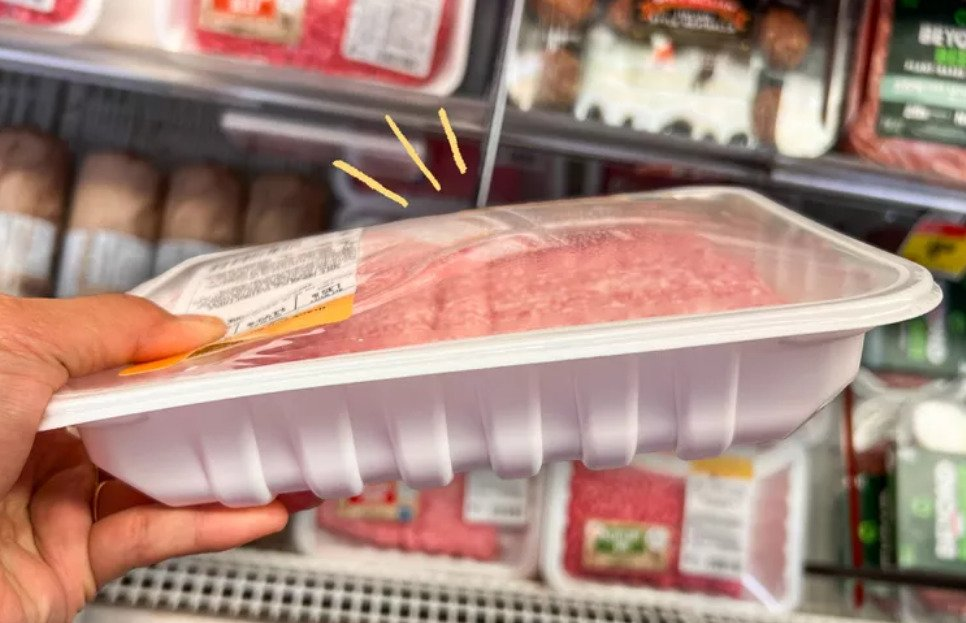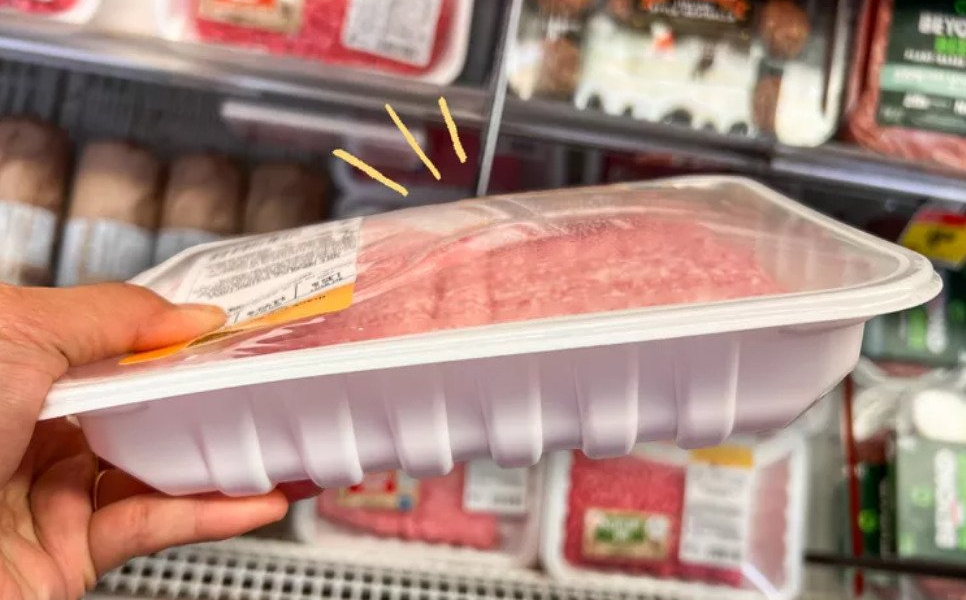In the world of food packaging, we’ve all picked up a bag of chips that seemed unnaturally puffed up or seen a bloated container of cheese that raises some red flags. But what’s really going on here? Is it a simple packaging mistake, or is there something more intentional behind it? As it turns out, that extra air in some packages isn’t always a bad sign; in fact, it’s often carefully designed to protect the contents and ensure they reach you in prime condition.
Let’s dive into the mysteries of bloated food packaging, exploring why some items are intentionally filled with air while others are vacuum-sealed, how to recognize when puffiness is a cause for concern, and what steps you can take to stay safe.
The Purpose of Air in Food Packaging: A Necessary Cushion

When you grab a bag of chips, the puffiness you feel isn’t accidental. That bag is filled with nitrogen gas, a harmless, tasteless, and odorless gas used in food packaging. This extra air acts as a cushion, protecting delicate items like chips from getting crushed as they make their journey from the factory to the store shelves and eventually to your home. This protective layer ensures that you get crispy, intact chips rather than a bag of crumbs.
But why nitrogen? Oxygen is removed because it can lead to spoilage and rancidity in certain foods. By replacing it with nitrogen, manufacturers can prolong the freshness and quality of the product, providing a more satisfying snacking experience.
Why Some Foods Have Zero Air in Their Packaging
In contrast, you’ll notice that perishable items like cheeses, sausages, and deli meats are often packaged with no air at all, typically sealed in vacuum-sealed or modified-atmosphere packaging. This absence of air plays a crucial role in preventing the growth of harmful bacteria that could spoil the food or even cause foodborne illnesses.
Vacuum-sealing creates an airtight environment, depriving aerobic bacteria of the oxygen they need to thrive. This helps to extend the shelf life of the product, ensuring that perishable items remain safe and fresh until they’re ready to be enjoyed.
When Bloated Packaging Could Signal a Problem
While some puffiness in packaging is intentional, there are times when
But not all bloated packaging signals danger. Certain types of bacteria, such as those used in fermented dairy products, can produce gas as a natural byproduct without necessarily causing spoilage. However, it’s essential to exercise caution. If you notice a bloated package, especially in items not typically stored with extra air, it’s better to inspect closely, check the expiration date, and consider discarding the item if there are any
Foods Most Prone to Bloated Packaging
So, which foods are most likely to experience bloated packaging? Let’s take a closer look at some common culprits:
- Cheese and Dairy Products: Dairy is a prime candidate for bloating, especially in items like cottage cheese, yogurt, and soft cheeses. When dairy spoils, bacteria produce gas, leading to visible puffiness.
- Sausages and Processed Meats: Packaged meats like sausages are vacuum-sealed to prevent spoilage. However, if they become bloated, it may be a sign of bacterial growth.
- Canned Goods: Canned foods are designed to have a long shelf life, but they can also become bloated if there’s contamination. A bloated or bulging can is a clear warning sign and should not be consumed.
- Pre-Packaged Ready-to-Eat Meals: These meals are often vacuum-sealed to ensure freshness. If any signs of bloating appear, especially before the expiration date, it’s wise to avoid eating them.
Dried foods and low-moisture items are generally less susceptible to bloating, as the lack of moisture prevents bacterial growth. However, it’s always a good idea to check any packaged food for abnormalities before consuming.
How to Handle Bloated Food Packaging Safely
Bloated food packaging can be unsettling, but knowing how to approach it can make all the difference. Here are some tips to keep in mind:
- Avoid Purchasing Bloated Packages: The first rule of thumb is simple—avoid buying products with bloated packaging. While some puffiness in items like chip bags is intentional, unusual bloating in perishable goods could mean the product has been compromised.
- Store Perishables Properly: Once you’re home, make sure perishable items are stored correctly. Dairy, meats, and prepared foods should go straight into the fridge, while canned goods should be kept in a cool, dry place to prevent damage to the packaging.
- Trust Your Instincts: If you open a product and something feels off—perhaps a strange smell or an unusual appearance—it’s better to be safe than sorry. Discard the item, even if the expiration date hasn’t passed, as improper storage or handling may have compromised its safety.
- Check Expiration Dates Regularly: Before consuming packaged goods, especially those stored for a while, verify the expiration date. Spoiled items can pose health risks, and it’s always best to stay cautious.
When in Doubt, Prioritize Food Safety
In many cases, bloated packaging doesn’t necessarily mean that food has gone bad. However, it’s essential to approach it with caution, especially when dealing with perishable goods. Understanding the purpose behind different packaging methods can help you make informed choices, distinguishing between intentional puffiness and potentially problematic bloating.
Packaging plays a vital role in keeping food fresh and safe. By staying aware of how foods are packaged and knowing which signs to look for, you can enjoy your meals with greater peace of mind. After all, when it comes to food, quality, safety, and freshness should always be top priorities.
Conclusion: A Little Knowledge Goes a Long Way with Bloated Packaging
At first glance, bloated food packaging might seem strange or even concerning, but not all puffiness is created equal. In some cases, it’s a deliberate choice to protect fragile snacks, while in others, it could be a warning sign of spoilage. By understanding the reasons behind bloated packaging, recognizing the foods most at risk, and knowing how to handle these situations, you can make better choices for your health and avoid potential risks.
So, next time you’re grocery shopping, don’t just grab the first item on the shelf—take a closer look, feel for any signs of puffiness, and remember these tips. Your attention to detail and understanding of packaging can help ensure that every bite you take is both safe and delicious.




